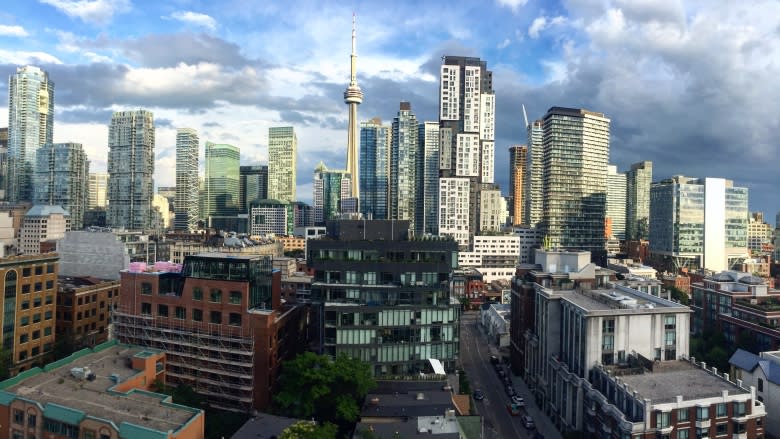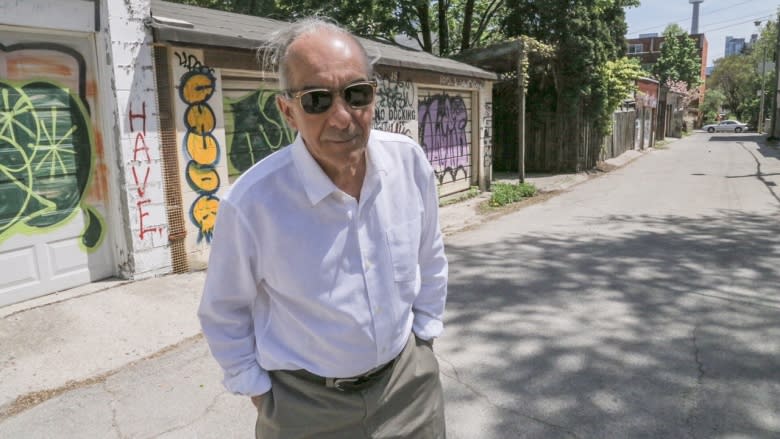City's new downtown plan aims to prevent high-rise shadows on parks, create 'livable' communities
George Traini is worried his neighbourhood could be left in the dark.
The 66-year-old has lived on Henry Street, just north of the Art Gallery of Ontario, for four decades. On a weekday afternoon, he strolls past charming semi-detached houses in this sun-drenched oasis in the heart of the city. He points out the row of restaurants shuttered in nearby Baldwin Village after a fire last year, saying he knows that buildings come and go in downtown neighbourhoods like this.
But multiple new high-rises slated for construction in the years ahead are irking him right now, in part because he worries the new towers a block or so away could cast long shadows on the homes and public spaces below.
"Morning sun is sunlight, Vitamin D, it makes for a healthy lifestyle," he said. "No one wants to live in constant darkness."
Traini isn't alone in his distaste for darkness.
City planners, residents, and councillors have all expressed their concerns for parks and playgrounds being shrouded in shadows. High-rise condo proposals across the city have routinely faced criticism for being too tall, too prone to blocking the sun.
Now, the city's first overhaul of its downtown plan in decades — a document years in the making, which is headed to city council this week for a final stamp of approval — is hammering home an increasingly popular viewpoint: Livable communities need plenty of sunlight.
No new shadow from development
Among dozens of other recommendations within TOcore, the new 25-year blueprint for downtown Toronto's growth, one key piece is the protection of downtown parks and open spaces by ensuring there's no new shadow created by development projects.
"TOcore says that you can build this tower, so long as there isn't increased shadows on the local park," says downtown city councillor Joe Cressy. "It's about making it livable."
"We work really hard to shape the kinds and size of buildings and how buildings are placed, so we maintain some access to sunlight on our public streets and in our parks and open spaces," echoed Gregg Lintern, the city's chief planner.
'We're all naturally drawn to the sun'
Paul Kulig, a principal at local architecture firm Perkins+Will, helped put together research and recommendations for the city. He believes buildings should be designed to maintain sunlight in the public realm and into other buildings, in part to maintain comfortable temperatures on the city's streets.
"We're all naturally drawn to the sun," he said.
Parks like Queen's Park, Nathan Phillips Square and Allen Gardens should have sunlight between 10:00 a.m. and 4:00 p.m., Kulig said.
That's crucial as condos become the norm, he added, since park space is replacing backyards as Toronto residents' outdoor outlet.
However, one sun positioning expert feels the city's latest guidelines are actually too restrictive for developers.
Ralph Bouwmeester, whose Barrie-based company prepares shadow impact studies for development proposals, said the city should instead specify how much of a park can be in shadow — say, up to 50 per cent.
"Coming up with a balance of sun and shade, I think, would provide for a better solution," he said. "A park doesn't have to be entirely in sun."
Correction : An earlier version of this story incorrectly identified the firm of architect Paul Kulig. We apologize for the error.(May 22, 2018 8:13 AM)




